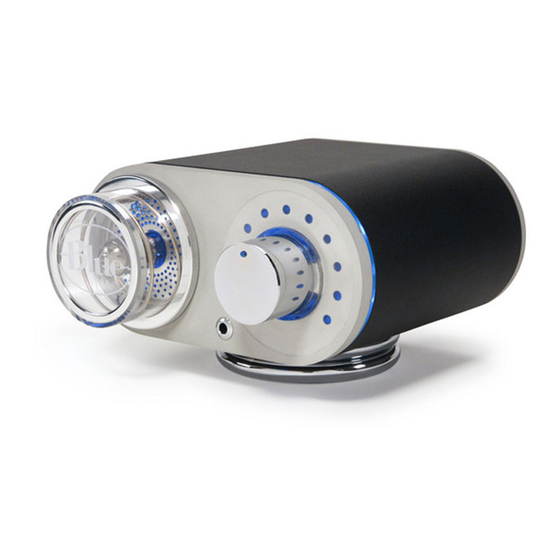Advertisement
Quick Links
FIG.1: Blue'sRobbiemic pre
offers a uniquedesignthat
limits front-panel features
to a largegain control and
single instrument input,
alongwith a windowto
the unit's ECC88
twin triode tube.
I
Robbie
A wonderfully clear
tube
preamp.
ByRichWells
lue Microphones has always attracted attention with its
splashy industrial
designs. Products
such as the Ball-
series dynamics
and the Mouse and Dragonfly mics,
which sport rotating
capsules, are eye-catchers.
The
company recently expanded into signal processing and
developed its first product-a
tube mic preamp called
Robbie-that
also serves as a Dr (see Fig.!). Robbie's fea-
tures are basic: a single XLR input and output; a power
switch; and buttons for mic or DI use, phase reverse, a
-20 dB pad, and 48V phantom power. The front panel has
only a ';I.-inch instrument
input and a big gain-control
knob. Robbie's design upholds Blue's reputation for pro-
ducing products with visual flair. As for the sound, the
emphasis is on loads of gain and extreme clarity.
L
'
.:jll
'itl
Look
and Feel
The Robbie preamp is an homage to Robby the robot
from the sci-fi classic Forbidden Planet (the preamp's logo
is a caricature of the legendary bot), and Robbie's chas-
sis reflects the curvaceous legacy of '50s-era design. Blue's
stated design goal is elegance in appearance and simplicity
of use. The preamp's chassis has semicircular sides, which
enhance the look of the two main features of the front
panel: an oversized chrome potentiometer
and a transpar-
ent round turret that juts out from the surface. Robbie's
108
ELECTRONIC MUSICIAN APRIL2005
ECC88 twin triode tube is housed in this turret, as is a
spring that spirals around the tube.
A blue light emanating from behind the front panel
surrounds the two front cylinders. The pot's range mark-
ers are regularly spaced translucent
circles that produce
more soft blue light. On our review unit's pot, another
smaller blue light glowed when Robbie reached unity
gain. According to Blue, however, this light has caused
some confusion with customers and is being eliminated
from future production
runs. The preamp's tube also
glows in its turret.
The more I used Robbie, however, the more I felt that
the space taken up by the large front-panel
cylinders
could have been allotted for the switches and connectors,
all of which (except for the Dr jack) are shunted to the
rear panel (see Fig. 2). That won't be a major hassle if you
set Robbie on a tabletop, but it's a case of form trumping
ergonomic function.
For $25, Blue offers a rackmount
adapter plate, but a rackmounted
Robbie (with its rear-
mounted
switches) would be difficult
to fully adjust
unless it was on a sliding rack tray. Robbie is also some-
what of a space hog; although it's a half-racks pace unit,
it's 3D in height.
Robbie's chassis is set on a circular metal ring with
threaded
holes for the rackmount
adapter screws. The
ringed base encompasses slightly more than half of the
chassis's total area. That could affect the unit's stability when
WWW.EMUSICIAN.COM
Advertisement

Subscribe to Our Youtube Channel
Summary of Contents for Blue Microphones Dragonfly
- Page 1 Robbie ByRichWells designs. Products such as the Ball- and the Mouse and Dragonfly mics, capsules, are eye-catchers. tube mic preamp called also serves as a Dr (see Fig.!). Robbie's fea- input and a big gain-control and a transpar- ECC88 twin triode tube is housed in this turret, as is a spring that spirals around the tube.
- Page 2 I". ROBBIE it's placed on an unusually unlevel surface or if another unit is stacked on top. Loud Robbie's preamp is a ClassA discrete tube design that uses high-quality metal film resistors and polystyrene capacitors to lower self-noise and dis- tortion.
- Page 3 Robbie produced natural-sounding electric and bass guitar sounds. In addition, Robbie helped effected sounds by taking the edge off the processed sound. That wasn't a by-product of a reduced high-frequency response; rather, it's a by-product of a better low end. As a Dr, Robbie provided clear, round, and even sound.

















Need help?
Do you have a question about the Dragonfly and is the answer not in the manual?
Questions and answers